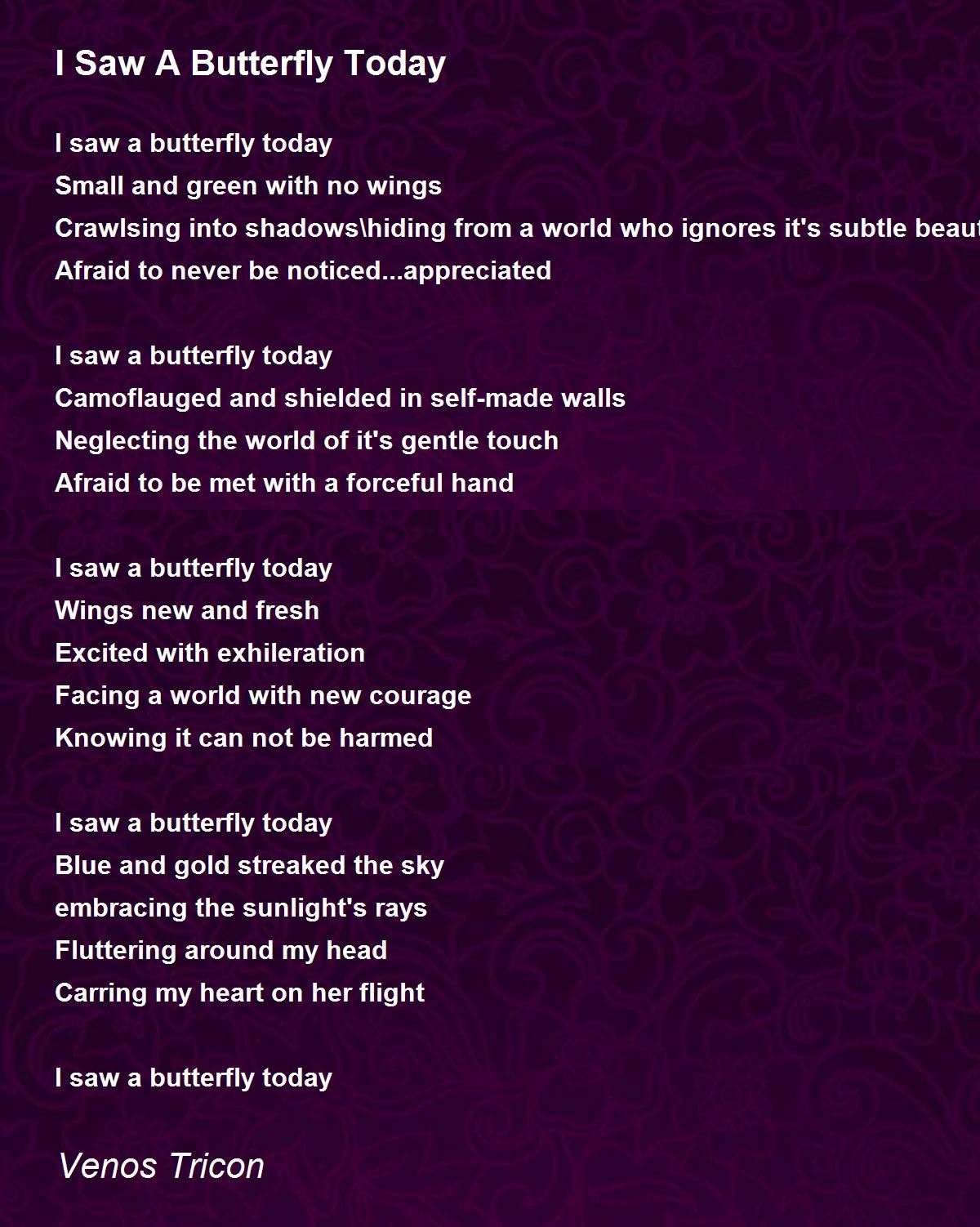
Today I Saw a Butterfly: A Poetic Masterpiece
Today I Saw a Butterfly, a timeless classic penned by John Keats, is an enchanting exploration of nature’s ephemeral beauty. Its intricate imagery and lyrical cadence have captivated generations of readers, inspiring countless artists, musicians, and poets.
Capturing the Butterfly’s Essence
To capture the elusive spirit of this poem, a wide array of writing styles can be employed, each offering unique ways to evoke the butterfly’s ethereal essence:
- Imagism: Vivid and concrete language that paints a sensory picture of the butterfly’s flight and colors.
- Symbolism: The butterfly as a metaphor for joy, freedom, and the fleeting nature of life.
- Pastoral: A focus on the idyllic setting of a meadow or garden, where the butterfly’s presence creates a sense of tranquility.
- Lyricism: Melodious language that flows with the natural rhythm of the butterfly’s flight.
Ode to Today I Saw a Butterfly
Poem 1:
Today, amidst the verdant bloom,
I witnessed nature’s vibrant plume.
A butterfly, with wings of gold,
Danced upon the zephyrs old.
Its hues, a tapestry of light,
Flickered in the sunlight bright.
A kaleidoscope of colors bold,
A story etched in beauty, told.
Poem 2:
Upon the silken wings it soared,
A symbol of the soul restored.
Free from chains of earthly strife,
It fluttered through the air, like life.
A fleeting moment, yet so grand,
A glimpse of heaven in this mortal land.
For in its flight, a truth profound,
That beauty’s found in what’s unbound.
Poem 3:
In meadows green, where daisies sway,
The butterfly’s dance, a graceful play.
Like petals carried by the breeze,
It flits between the flowers, with ease.
A symphony of colors bright,
Blending with the sunlight’s light.
A transient joy, a summer’s dream,
As if nature’s canvas, a living scene.
Writing Tips and Tricks
- Employ vivid imagery to bring the butterfly’s vibrant colors and delicate flight to life.
- Use metaphors and similes to explore the butterfly’s symbolism and resonance with human experiences.
- Consider the rhythm and flow of your poem, capturing the natural cadence of the butterfly’s movement.
- Draw inspiration from the poem’s original language and themes, while putting your own unique spin on it.
FAQs
Q: What is the main theme of Today I Saw a Butterfly?
A: The poem celebrates the beauty and fleeting nature of life, symbolized by the butterfly’s delicate existence.
Q: Who wrote Today I Saw a Butterfly?
A: John Keats, a Romantic poet known for his lyrical style and exploration of nature’s wonders.
Q: Can anyone write a poem about a butterfly?
A: Yes, as long as you approach it with a sense of wonder, creativity, and an appreciation for the butterfly’s symbolism.
Conclusion
Today I Saw a Butterfly continues to inspire and enchant, offering a profound meditation on beauty, freedom, and the ephemeral nature of existence. Whether you are a seasoned poet or a budding writer, embracing the spirit of this poem can open up endless possibilities for poetic expression.
Remember, respect the original author’s work, give credit where due, and let the butterfly’s inspiration flow through your own creative endeavors. May your poems capture the timeless wonder of this enigmatic creature, and touch the hearts of those who read them.
